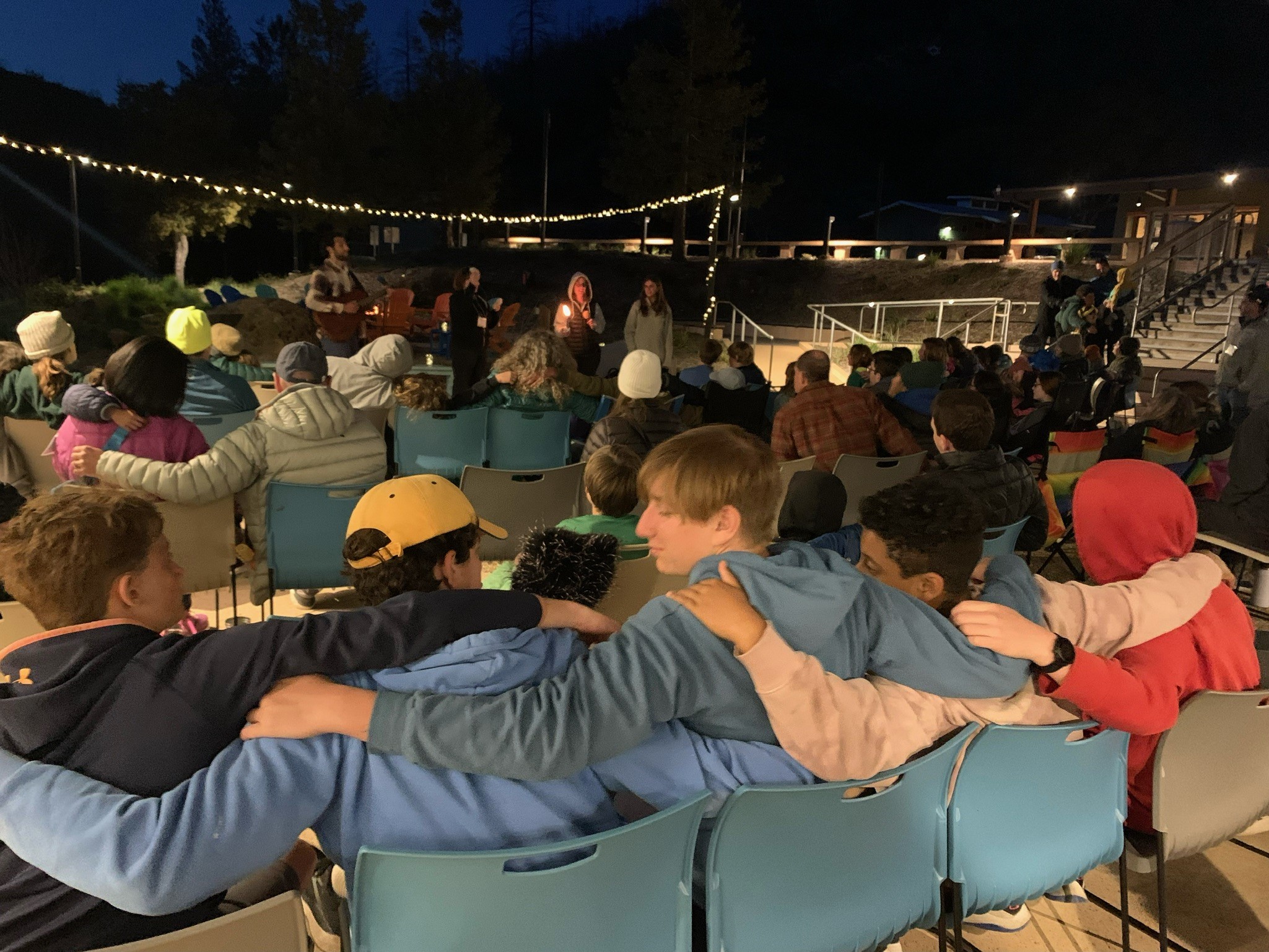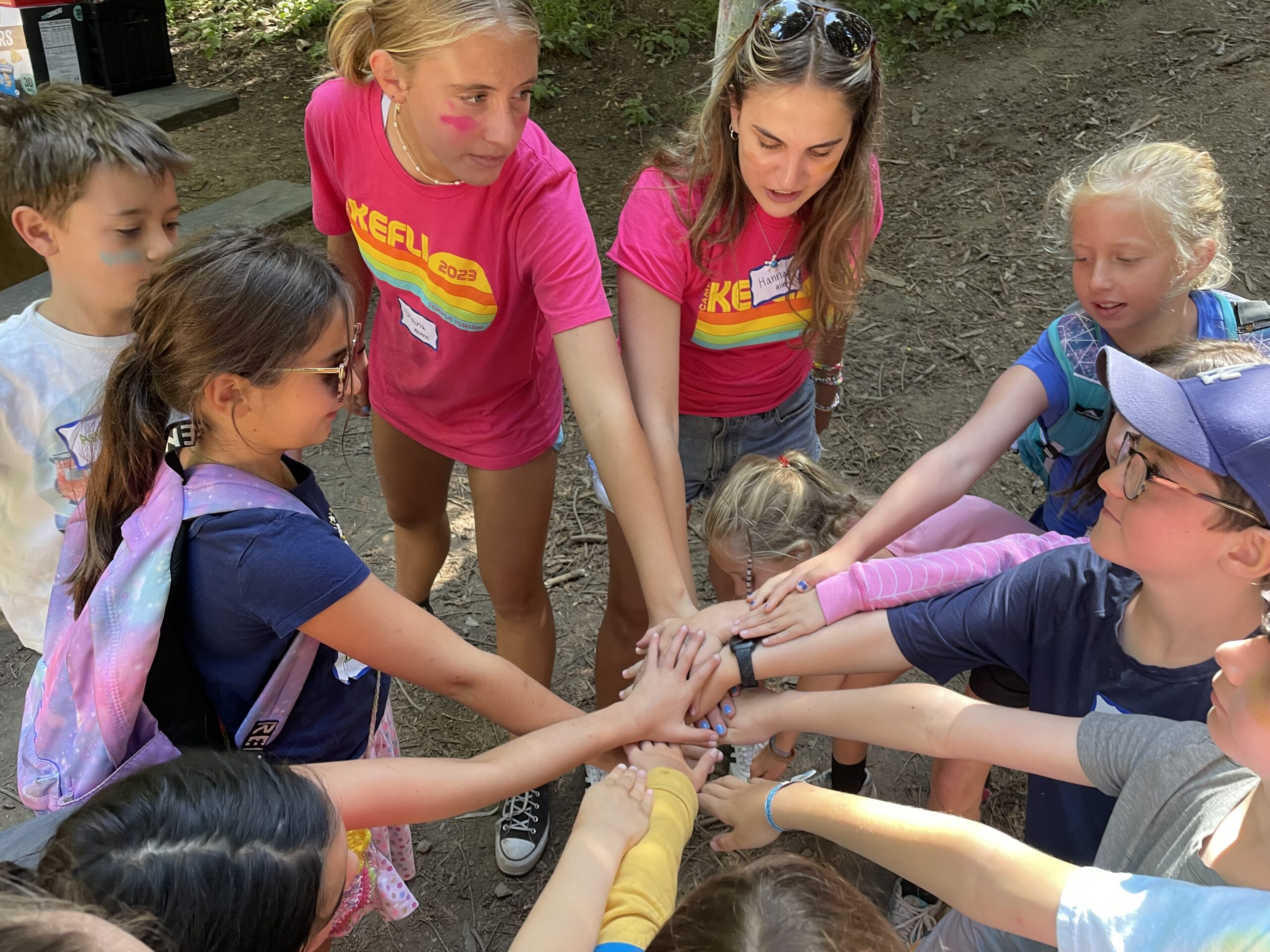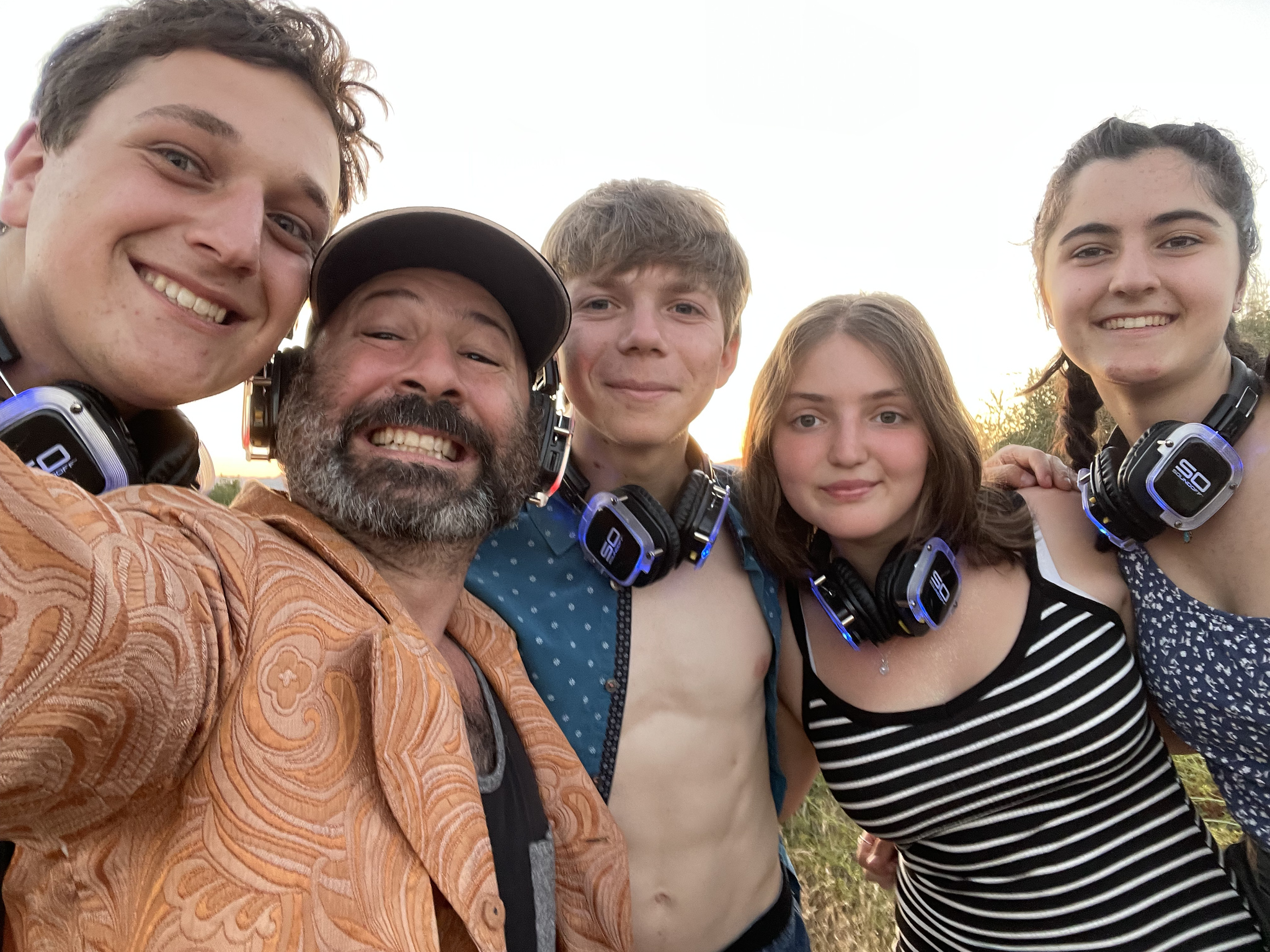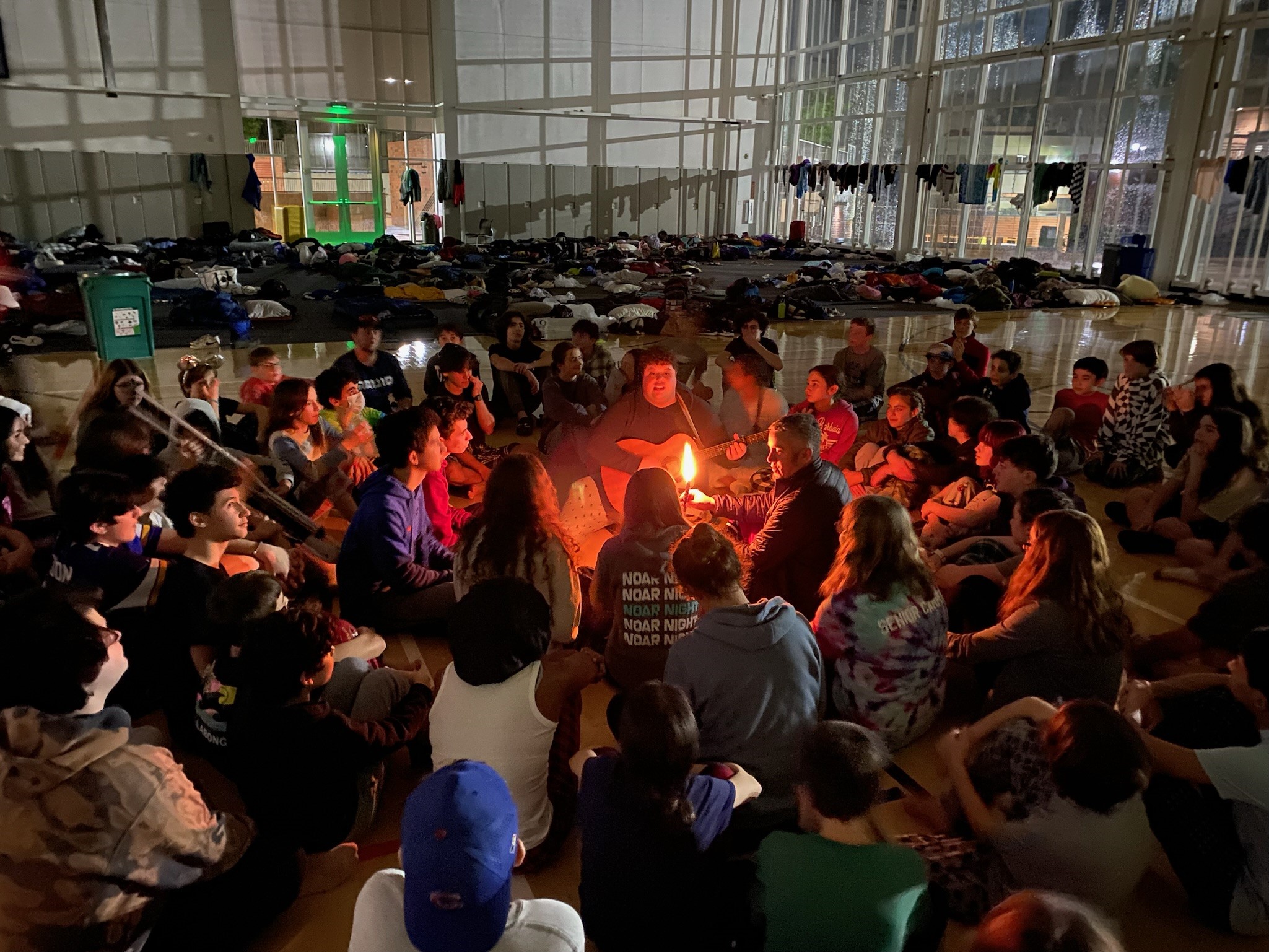By Dana Sheanin, Jewish LearningWorks’ CEO and Rabbi Alissa Miller, Rabbi of Community Engagement at Temple Isaiah, Lafayette, CA and Voices for Good Alumna.
I have spent almost twenty of my thirty years in Jewish education thinking about teenagers — how to reach them, build their Jewish identities, encourage resilience, and inspire them to rely on Jewish values to anchor them as they grow. Through years as a member of the Union for Reform Judaism’s Youth and Camping division (2005–11), a Midrasha teacher (2012–13) and leadership within the Bay Area’s Jewish Teen Education and Engagement initiative (2017–2023), and now through the launch of Jewish LearningWorks’ new Resilience Roundtable (2024,) teens have been at the center of my work. I have witnessed the Bay Area’s communal ecosystem repeatedly invest large sums to increase teen engagement. Observing these efforts has only reinforced my long-held conviction that it is the adults involved — teachers, counselors, youth group professionals and program directors — that ultimately determine the results.
This spring, two years after the sunset of the Bay Area’s most recent multi-million dollar Teen Initiative, supported by a Funder Collaborative and the Bay Area Jewish Federation, I sat down for a conversation with one of our most gifted, local teen educators — Rabbi Alissa Miller of Temple Isaiah — to explore her strategy for reaching teens, what she has learned, and what the future might hold.
Reimagining teen engagement goals
Rabbi Miller — known by Temple Isaiah teens as RAM — joined the congregation’s staff as the youth and young family rabbi in 2007. As she celebrates her chai anniversary, her role has expanded, but her love of teens remains constant. RAM arrived with new rabbinic ordination, some experience in youth programming, a love of Jewish camp, and a commitment to taking teens seriously. With the support of the congregation’s senior clergy, she spent the first year hanging out with the teens and listening deeply, and over the next several years made a number of strategic changes in response to what she heard, including:
- Redesigning the high school program — Noar Night — in response to the teens’ feedback
- Adding a social dinner component to evening programs, to allow the teens to decompress and address the lack of time to eat in their hectic schedules
- Initially participating in many youth group events and weekends, in spite of the fact that the congregation also had a youth director, to reduce intimidation the teens felt around clergy. She still goes on the annual 7th and 8th grade LA trip to build a trusting relationship with the community’s tweens
- Chaperoning 10th grade students on the Reform movement’s L’Taken Washington DC trip, to offer the travel opportunity they wanted, as well as encouraging one of the senior rabbis to join her, so teens could begin to get to know him. This has now extended to other travel opportunities each year of high school
- Exchanging cell numbers with the teens at the end of 7th grade to recruit them directly rather than going through their parents, and to enable them to easily connect with her
- Choosing to become the director of Camp Kefli, Isaiah’s two-week end-of-summer day camp to create additional connection points with youth, and build more leadership and bonding opportunities for teens.

Relationships at the center
Though many congregations have seen teen program attendance steadily decline, Temple Isaiah’s program serves 200 teens a year. Since October 7, 2023, participation, which was already strong, has only increased. The core teen community is grounded in Noar Night, which serves as a weekly anchor. RAM proudly recalls what teens told her in 2008, sitting on the floor at Dulles Airport awaiting their return flight from Washington DC. “They told me that they wanted us to offer something every single week, even though they wouldn’t necessarily come every week. They wanted us to be there when they were available. They were clear that they didn’t want time for homework, tutoring or SAT prep. They wanted Panda Express for dinner, time to connect socially, and time to talk about what’s going on in their lives and in the world around them in a Jewish way.” More than fifteen years later, Isaiah’s success suggests that this is what teens still need.
The grade level focus has changed over the years, in response to continuing to listen to and respond to the needs. “In 9th grade, we used to talk a lot about gender and sexuality, but their schools do that now so we’ve brought in the topic of race and privilege in a way their schools aren’t talking about it.” The core group of adults that teach at Noar Night are often involved in other ways — from staffing weekend trips to serving as unit heads at Camp Kefli, in order to deepen bonds with the teens. Staff is also intentional about relationships between teens — thinking before each program about how to pair kids and create groups that build community. “When we are on a bus, we are often talking to the kids, not our colleagues at the front, the teachers serve dinner to connect with each teen that comes through, and we’re always looking out for the kid who isn’t talking to others.”

Investing in role models
The full time youth rabbi position at Temple Isaiah was initially seeded by a generous gift from a group of families, who realized that the existing teen program — which then included a youth group and co-sponsorship of the community’s Midrasha high school program — had begun to stagnate, and that fresh energy was needed. Importantly, RAM’s position has remained full time. The congregation’s long term vision for teen engagement relies on their investment in consistent rabbinic presence, supported by youth directors, who they anticipate will cycle through every couple of years. RAM likens this to Christian youth ministry model, where the youth pastor is understood to be a central, and equal member of the community’s clergy, rather than seeking a more senior rabbinic role. In addition to sustaining two staff positions, even as the philanthropic environment has contracted, the congregation has remained committed to a variety of teen entry points, with support from the Brotherhood and Sisterhood, who are equally committed to making the congregation a home for teens.
An array of youth professionals have benefited from Temple Isaiah as a learning lab for their careers. “One of the most important things the community can do is to “help educators develop their vision and relationship skills” RAM says. She herself has benefited tremendously from the community’s investment in her — specifically through the Jewish LearningWorks Voices for Good Initiative. As a hub of teacher training and development for 125 years, Jewish LearningWorks’ believes deeply in the power of role models, viewing well supported educators as the foundation of a meaningful educational experience. Our organization served as a key partner in the above mentioned teen initiative,training and supporting hundreds of youth professionals over six years, including Temple Isaiah’s youth directors. Unfortunately, funding for intensive support for youth professionals ended again with the completion of the Teen Initiative in 2023. As those of us working in the community are aware, too often the commitment of funders to particular populations is cyclical, leading to the creation of new opportunities that begin to take root just as grant funding expires.
Building resilience
Regardless of available funding, building teen resilience clearly matters. Earlier this year, Jewish Federations of North America and Stanford University released a study, Strength, Stress, and Support: A Portrait of American Jewish Teen Well-Being, as part of a national teen wellness initiative. As the opening of the report notes: “Today’s teens face numerous pressures: academics, social dynamics, identity formation, and the complex act of becoming. For Jewish teens, typical adolescent struggles are compounded by rising antisemitism and the aftermath of October 7 — they are moving through a world where they can feel isolated, misunderstood, or under attack. These can be life-shaping challenges.”1
Strikingly, researchers found “Among the factors studied, teens’ sense of well-being was most strongly connected to the personal importance they placed on being Jewish. This relationship was evident across all five dimensions of well-being measured in the study: engagement, perseverance, optimism, connectedness, and happiness….Participation in Jewish teen programming exhibited a minimal, yet still positive, correlation with teens’ overall sense of well-being. Teens cited the relationships they experienced with their peers in Jewish teen programs as being particularly influential in helping them feel like they could be their full, authentic selves, however, most teens felt that adults involved in Jewish teen programs had a limited understanding of contemporary teen experiences.”2

Teen respondents were also asked what makes them feel free to be themselves in a Jewish environment. Here, responses included “the support I receive from other people (60%)” “my relationship with other adults (46%)” and “I have good role models there (38%).” As a lifelong advocate for relational engagement of teens, I found this data deeply gratifying. As did RAM, who is undoubtedly one of these adults for teens at Temple Isaiah.
While none of these conclusions are earth shattering, they provide a critical and timely reminder of the most important investment our community can make in teens: investing in the educators and adults they encounter weekly, and in the time required to build and maintain relationships. It’s why we at Jewish LearningWorks continue to invest in mentorship, in supporting a community of practice of adolescent educators via our Bay Area Jewish Youth Resilience Roundtable, and in honoring the work of these educators. We encourage you to join us in investing in work that truly matters.


